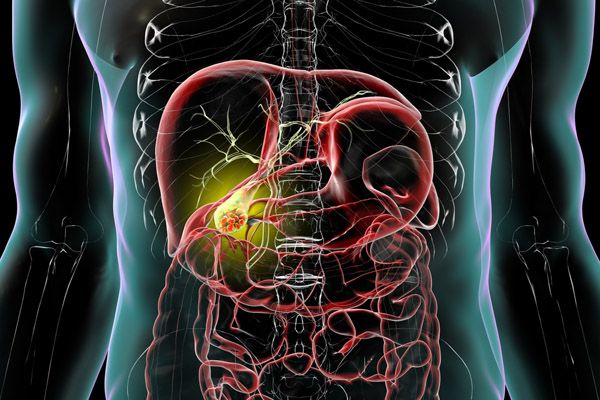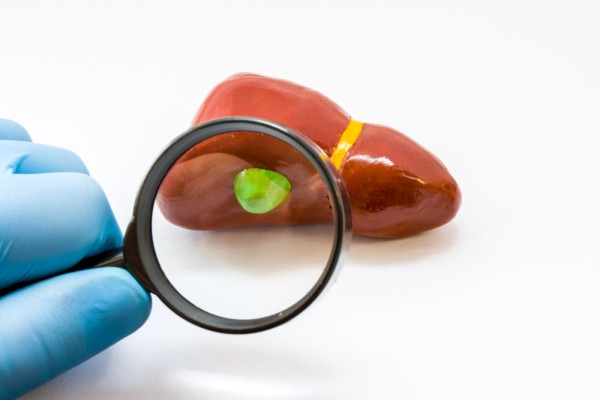Umbilical Hernia SurgeryLong Beach, CA
An umbilical hernia surgery is a common general surgery procedure that can be performed with open or laparoscopic techniques to remove an umbilical hernia. An umbilical hernia is a tissue bulge on or near the belly button. While they are common in children and resolve on their own, they can cause health complications in adults without medical intervention.
If you have been dealing with an umbilical hernia, the Associates in General Surgery team is here to help. We perform open and laparoscopic umbilical hernia surgery in Long Beach and the surrounding communities. Give our office a call at (562) 362-3939 to learn more about this procedure or to schedule an appointment.
Understanding Umbilical Hernias?
An umbilical hernia is a weakness that develops in the abdominal wall through and around the navel. It occurs when part of the intestine protrudes through the umbilical opening in the abdominal muscular tissues. A bulge or sac containing fat or intestine that pushes through the weak section of the abdominal wall. Over time, these hernias can become larger and more uncomfortable as the hernia sac protrudes from inside the abdomen.
During gestation, the umbilical cord passes through a small opening in the baby’s abdominal muscles. The opening typically closes after birth, but an umbilical hernia can appear if the opening does not completely close. In adults, too much abdominal pressure can cause an umbilical hernia. This increased pressure can be caused by the following:
- Obesity
- Multiple pregnancies
- Previous abdominal surgery
- Fluid in the abdominal cavity
- Long-term peritoneal dialysis for kidney failure treatment
Umbilical hernias are common in infants and children. They can typically resolve on their own within two years without causing any adverse health issues. However, umbilical hernias in adults will require professional treatment and surgical intervention.
“An umbilical hernia is a weakness that develops in the abdominal wall through and around the navel.”
Signs and Symptoms of Umbilical Hernias
Umbilical hernias typically present as a soft bulge or swelling near the belly button, which may become more noticeable when standing, coughing, or straining. They do not always cause symptoms. However, they can become more uncomfortable as the hernia is incarcerated, which is where the neck of the hernial sac is constricted.
Patients should seek professional treatment if they begin to experience the following symptoms:
- Sharp or sudden abdominal discomfort
- The bulge is red, purple, dark, and firm
- Gastrointestinal discomfort
- Blood in the stool
- Nausea and vomiting
In some cases, complications such as incarceration or strangulation can occur, requiring immediate surgical attention. Recognizing the signs and symptoms of an umbilical hernia in its early stages is crucial for patients to receive the diagnosis and treatment they need.
“Recognizing the signs and symptoms of an umbilical hernia in its early stages is crucial for patients to receive the diagnosis and treatment they need.”
Umbilical Hernia Surgery Options
Surgical repair is the most effective treatment for umbilical hernias in adults. The two primary surgical options include open hernia surgery and laparoscopic (minimally invasive) surgery. In open hernia repair, Dr. Jeffrey Islas, MD, will make an incision near the belly button, push the protruding tissue back into place, and reinforce the abdominal wall using sutures or a biocompatible mesh.
Laparoscopic surgery involves the doctor making several small incisions through the abdomen. Then, they will insert a camera and special instruments into the incisions. They will then repair the hernia through the incisions. Both surgical methods are considered safe and effective. The doctor will recommend the most appropriate option depending on the size of the hernia and the patient’s overall health.
“Surgical repair is the most effective treatment for umbilical hernias in adults.”
Check out what others are saying about our services on Yelp: Umbilical Hernia Surgery in Morgan Hill, CA
Recovery and Aftercare
Most umbilical hernia surgery is done on an outpatient basis. However, some patients may need to stay in the hospital for a short time if the hernia is very large. If necessary, the surgeon may prescribe pain medicine to help manage postoperative discomfort.
Our team will provide postoperative instructions on how patients can care for their incision at home. These instructions will include when the individual can resume their normal activities. Recovering from umbilical hernia surgery typically takes about 2 to 4 weeks.
While umbilical hernia surgery is generally safe, there are some associated risks. These include infection around the surgical site, bleeding, and potential injury to nearby organs like the bowel or bladder. Umbilical hernia surgery can also cause scarring, particularly if the hernia is large. Additionally, an umbilical hernia can return after surgery, but it is uncommon.
“Recovering from umbilical hernia surgery typically takes about 2 to 4 weeks.”
Benefits and Risks of Umbilical Hernia Surgery
A surgical procedure is the only proven way to repair an umbilical hernia in adults. Fortunately, these surgery patients can return to their normal activities without discomfort. The hernia is also less likely to recur.
However, an umbilical hernia left untreated can lead to discomfort and an increase in size. If the intestine becomes squeezed in the hernia, it can cause a medical emergency that requires immediate surgical attention.
“A surgical procedure is the only proven way to repair an umbilical hernia in adults.”
Questions Answered on This Page
Q. What is an umbilical hernia?
Q. What are the signs and symptoms of an umbilical hernia?
Q. What are the different types of umbilical hernia surgery?
Q. How long does it take to recover from umbilical hernia surgery?
Q. What happens if I do not get an umbilical hernia treated?
Frequently Asked Questions About Umbilical Hernia Surgery
Q. Is umbilical hernia surgery safe?
A. Umbilical hernia surgery is considered a low-risk and common procedure. However, as with any surgery, there are risks such as infection, bleeding, or recurrence. Fortunately, most patients recover without complications and experience long-term relief.
Q. Will I have a scar after umbilical hernia surgery?
A. Yes, a small scar is likely, typically located near or around the belly button. Dr. Islas, MD, will typically place the incision within the natural folds of the navel to minimize visible scarring. Over time, the scar generally fades and becomes less noticeable.
Q. What are the potential risks and complications of umbilical hernia surgery?
A. Possible complications of this procedure include infection, bleeding, fluid buildup, pain, or recurrence of the hernia. In rare cases, patients may experience adverse reactions to anesthesia or complications related to the mesh. The Associates in General Surgery team will discuss these risks during your preoperative consultation.
Q. Can the hernia come back after surgery?
A. While umbilical hernia repair has a high success rate, there is a small risk of recurrence. Factors such as obesity, smoking, chronic coughing, or heavy lifting can increase the likelihood. Fortunately, the surgical mesh can often help reduce the risk of this occurring.
Q. Are there alternatives to surgery for treating an umbilical hernia?
A. No, there are no proven effective long-term alternatives to surgery for treating an umbilical hernia, particularly in adults. While supportive measures, such as wearing a hernia belt and making lifestyle changes, may temporarily relieve symptoms, they do not address the underlying cause of the condition. Thus, surgery remains the only proven treatment method.
Learn More About Umbilical Hernia Surgery
Associates in General Surgery offers umbilical hernia surgery in the Long Beach area. Depending on your needs, Dr. Islas, MD, can perform the procedure open or laparoscopically. Would you like to learn more about our treatment options? Call our office at (562) 362-3939 to schedule a consultation.
Contact Us
Associates in General Surgery is located at
701 E 28th St Ste 117A
Long Beach, CA 90806





